 Sunday/Weekend
Sunday/Weekend

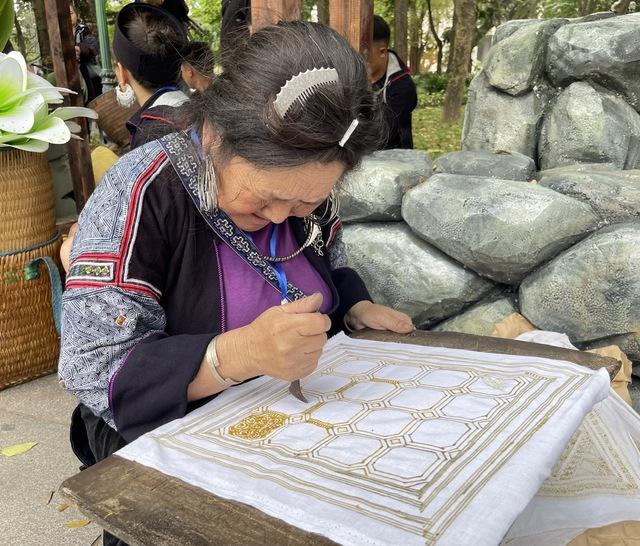 |
| CREATOR: Giàng Thị So, an ethnic Mông woman in Tả Van Village, Sa Pa Town, is doing beeswax painting on a piece of fabric. Photo toquoc.vn |
The traditional technique of using beeswax to create artistic patterns on handloom fabric clothing and other items among the ethnic Mông people in the northern mountainous regions has become a unique cultural identity, deeply embedded in local life.
This intricate art form has been practised for generations, evolving into a form of creative expression. With skilled hands and rich imagination, indigenous women embellish fabrics with sophisticated and vibrant motifs, appealing to both locals and visitors.
Beeswax painting is a complex craft, involving multiple steps, with all materials and colours sourced from nature. Although the process of drawing may sound simple, every step requires precision and skill, and takes considerable time.
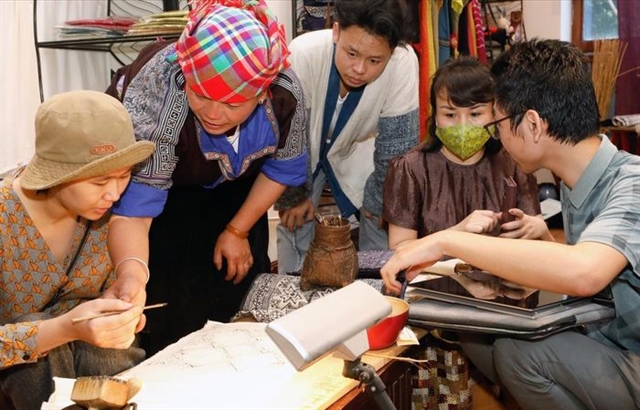 |
| HELPING HAND: Lý Thị Ninh (2nd from left), a Mông ethnic woman guides some tourists to practise traditional beeswax painting at an exhibition in central Hà Nội. Photo baolaocai.vn |
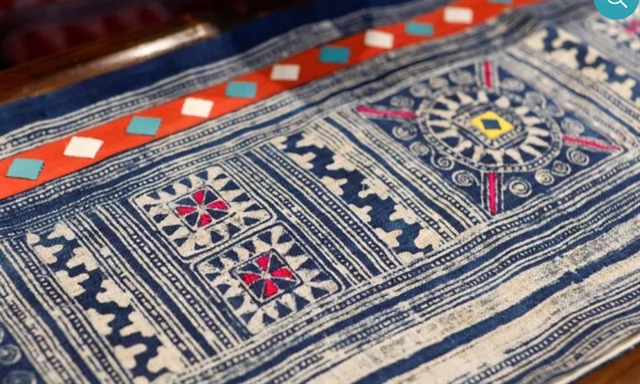 |
| PATTERNED: A complete brocade product with beeswax painting patterns of the Mông people. Photo baolaocai.vn |
Giàng Thị So, a 58-year-old artisan from Tả Van Commune, Sa Pa Town in Lào Cai Province, has been using this technique for nearly 40 years.
“Painting patterns with beeswax is a difficult job, requiring skill, meticulousness, and patience. I am the only one in my family continuing this craft. I’ve loved drawing since I was young and learned from experienced women in my village,” she said.
“To be a professional pattern painter, you need not only high skills but also creativity and flexibility. The motifs often represent animals and plants in nature—snails, leaves, flowers, and the moon—so having a good imagination is key. The designs also tell stories from the lives of ethnic minority communities in the mountains.”
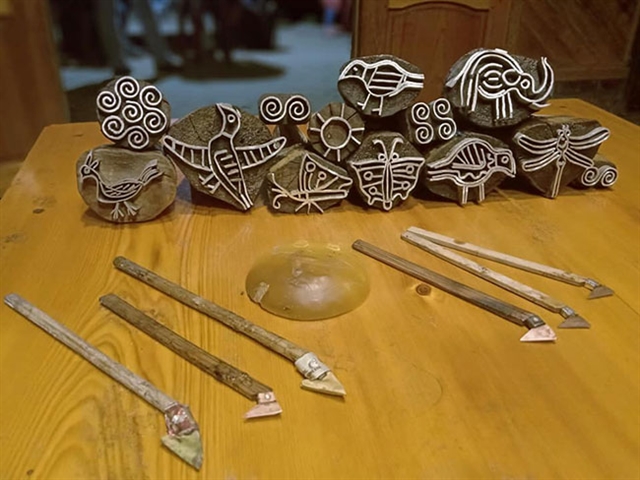 |
| SCALPELS: Some beeswax painting tools. Photo laocaitourism.vn |
So explained, the beeswax must be carefully selected—yellow for young wax and black for old. After extracting the honey, the wax is heated up until it melts, and the two types of wax are mixed.
The beeswax needs to be heated to 70-80 degrees Celsius to prevent it from drying out during use. The drawing "pen" is made of bamboo or wood, with a tip formed from three triangular copper leaves, and the finer the tip, the more intricate the design.
“After drawing, the fabric is boiled to remove the beeswax, leaving the patterns on the cloth. Then it’s dyed in indigo, dried, embroidered with coloured threads, and finally transformed into products like pillowcases, towels, or clothing,” So said.
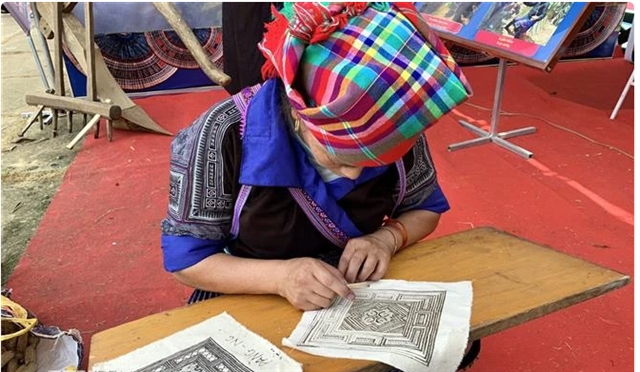 |
| INTRICATE: The art of creating beeswax patterns on traditional ethnic Mông costumes is a series of elaborate handcrafted stages. VNA/VNS Photo Việt Dũng |
In recent years, local authorities and campaigners in northern provinces have launched initiatives to preserve and promote this unique Mông technique. Tourists are increasingly drawn to villages where they can witness and learn the beeswax painting skills first-hand. Many visitors take home self-designed fabrics as souvenirs, adding a personal touch to their cultural experience.
Lý Thị Ninh, an artisan from Trống Tông Village in Yên Bái Province’s Mù Căng Chải District, recently demonstrated beeswax painting at an exhibition in Hà Nội, attracting both locals and international tourists.
Ninh is considered one of the best in her village, having mastered embroidery, handloom weaving, and beeswax painting from her grandmother and mother at a young age.
“The Mông believe that the patterns on their costumes and household items help them communicate with the gods, inviting blessings and warding off evil. Each design represents the people’s noble aspirations. It’s a valuable source of folklore, reflecting the economic, cultural, and social history of the Mông,” Ninh said.
National recognition
The hand-painted batik of the Mông was recognised as a national intangible cultural heritage last year. The technique has been preserved by Mông communities in districts such as Mù Cang Chải, Trạm Tấu, and Văn Chấn in Yên Bái Province for generations, and is used to create exotic patterns that decorate traditional items like handbags, scarves and clothing.
This recognition is expected to help preserve the traditional craft and introduce it to a wider audience, fostering community-based tourism in the northern provinces.
Thanks to master artisans like So and Ninh, who remain passionate about their craft, the art of beeswax painting is likely to be preserved for future generations.
The ethnic Mông people, numbering nearly 1.4 million, live in northern mountain provinces such as Hà Giang, Tuyên Quang, Lào Cai, and Yên Bái, according to a 2019 survey by the Committee for Ethnic Affairs. They are known for their unique crafts, including silver carving, bronze casting, and embroidery.
Among these, the beeswax painting technique is not only an important form of fashion decoration but also represents the spiritual richness and cultural identity of the Mông, adding great value to their traditional costumes. VNS




